Since the early 18th century, Mardi Gras in New Orleans has evolved into one of the the biggest celebrations in the US. It’s steeped in rich traditions that many of us know little about. With this Tuesday being the big day, we thought we’d unmask (haha) a few of the most popular ones.
Reston may be miles away from New Orleans, but let’s find out more about this annual Bacchanalia, shall we?
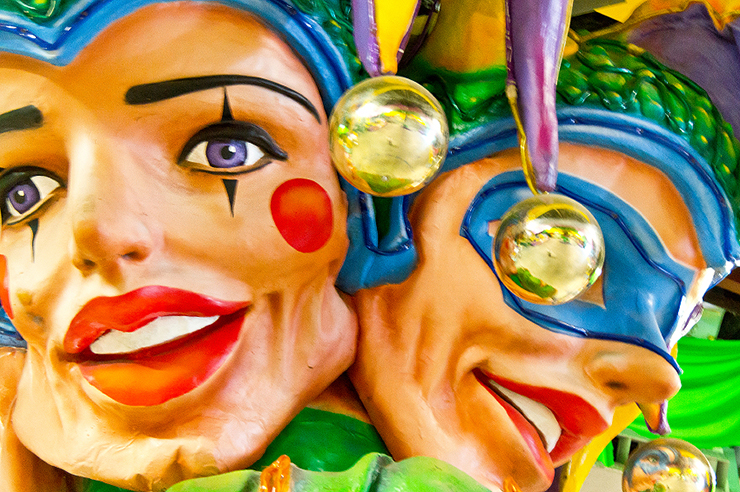
Mardi Gras, literally “Fat Tuesday,” has grown in popularity in recent years as a raucous, sometimes hedonistic event. But its roots lie in the Christian calendar beginning on or after the Epiphany or King’s Day. It’s considered the “last hurrah” where revelers feast on rich, fatty foods before the fasting of Lent begins on Ash Wednesday. The enormous party in New Orleans ends abruptly at midnight on Tuesday, with battalions of street sweepers pushing the crowds out of the French Quarter.
1. Krewes and Floats
Krewes are the secret societies that organize the elaborate parades and balls during Mardi Gras. These krewes are traditionally named after Gods or Goddesses in Greek or Roman mythology. Throughout the year, krewes build floats and hold meetings in secret. On the day of their parade they ride as masked riders. Every Krewe holds their own parade leading up to Mardi Gras, while The Krewes of Zulu and Rex ride on Mardi Gras day.
Founded in 1872, The Krewe of Rex is one of the oldest participating groups in Mardi Gras. Rex formed in post civil war New Orleans as a way to entice tourists and businesses to the city. This Krewe’s original purpose was to put on a spectacle for the visiting Grand Duke Alexei Alexandrovich of Russia. Every year, the Rex Organization chooses a new King Rex, always a prominent person in New Orleans, and he is given the symbolic Key to the City by the Mayor.
There are now dozens of Krewes, each with their own style. The Krewe of Orpheus was founded in 1993 by Harry Connick Jr’s family. It’s a large, music-themed group with over 1,000 members parading on the Monday prior to Fat Tuesday (Lundi Gras). Named for the son of the Greek muse Calliope, Orpheus’s annual parade is one of the most highly anticipated because of its 36 ornate floats and celebrity riders.
Fun Fact: In DC The Krew of Lousisiana is comprised of over 400 displaced Louisianians who, each year, bring the celebration to our nation’s capital.
Early Mardi Gras floats were horse drawn carts and wagons which began to appear in the mid-1800s. Over the years, horses were replaced with trucks and semi tractor-trailers, as bigger and bigger wagons were needed to accommodate the elaborate designs, sizable Krewes, and their cargos. Today’s floats are elaborately themed, have amenities like bathrooms and cost thousands of dollars to produce.
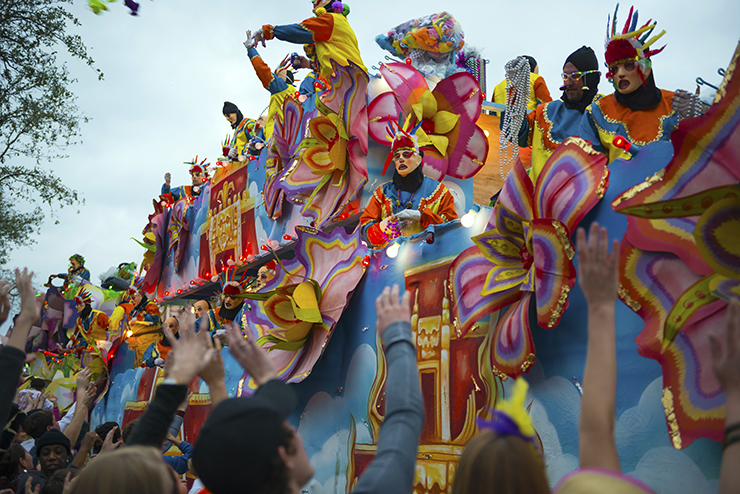
2. Colors
You have probably noticed that the official colors of Mardi Gras are green, purple and gold. But why? As the story goes, The Krewe of Rex selected the official Mardi Gras colors in 1872 to honor the visiting Russian Grand Duke Alexei Alexandrovich Romanoff, whose house colors were purple, green and gold. The symbolic meaning for these colors is justice (purple), faith (green) and power (gold). These colors are incorporated into everything from beads to cakes to masks.
3. Masks
Masks were originally worn during Mardi Gras to conceal one’s identity and as a means for party goers to mingle within whatever social class they desired. This anonymity added to the excitement and magic of the celebrations throughout the city. Oddly enough, float riders are required to wear masks by law to preserve this freedom from social constraints. Conversely, it is also a law that masks cannot be worn on any other day and must be removed by 6pm on Fat Tuesday, though this is not strongly enforced. While many masks are simple, artists put a lot of pride behind creating elaborate, one-of-a-kind pieces.
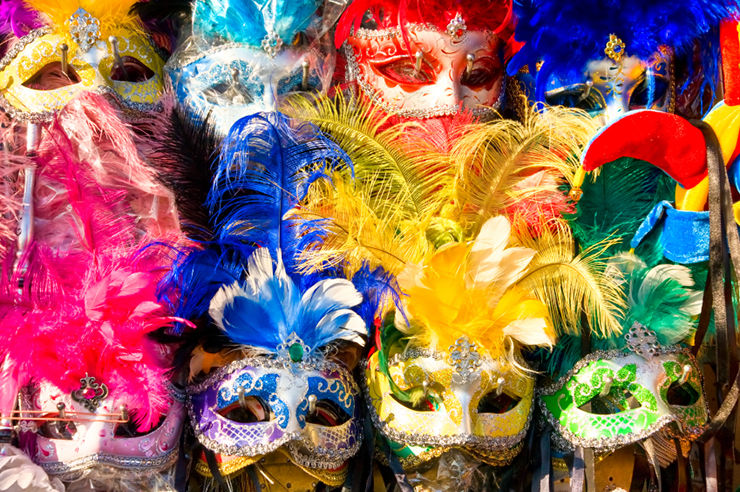
4. Beads
Beads are EVERYWHERE during Mardi Gras. Early on, inexpensive necklaces made of glass were tossed into the crowds by the parade krewes. Originally, the idea was to toss the color beads to a person who exhibited one of the Mardi Gras color characteristics (green for faith, etc.). The beads were an instant hit and eventually were made in lightweight plastic and mass produced.
In the 1970s it became a thing for women to bare their breasts for beads. Breast flashing is not considered to be a “real” tradition of Mardi Gras, but rather a phenomenon started by college kids drunk on hurricanes stumbling down Bourbon Street.
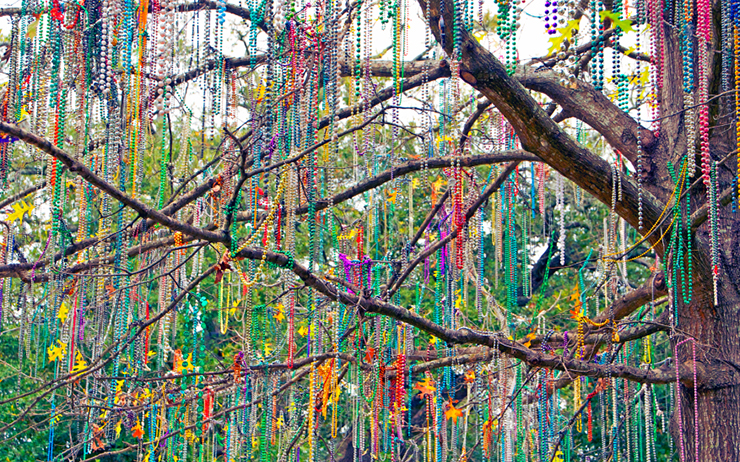
5. King Cake
This ring-shaped confection is meant to honor the three kings who visited the Christ child on Epiphany, the 12th day after Christmas. As a symbol of this Holy Day, a tiny baby is placed inside each King Cake. Whoever receives the baby in their piece of cake must buy the next King Cake or throw the next party. Previously, the baby was made of porcelain and baked into each cake. These days bakers place a plastic baby on top of the cake and leave it to the host to hide, presumably to avoid a lawsuit when someone chokes.
These cakes, usually cinnamon in flavor and decorated in Mardi Gras colors, are hugely popular. Locally, you can order one at Bayou Bakery in Arlington. Bayou’s King Cake has made it to the final round of Southern Living’s King Cake Face Off. You can vote for a winner here.
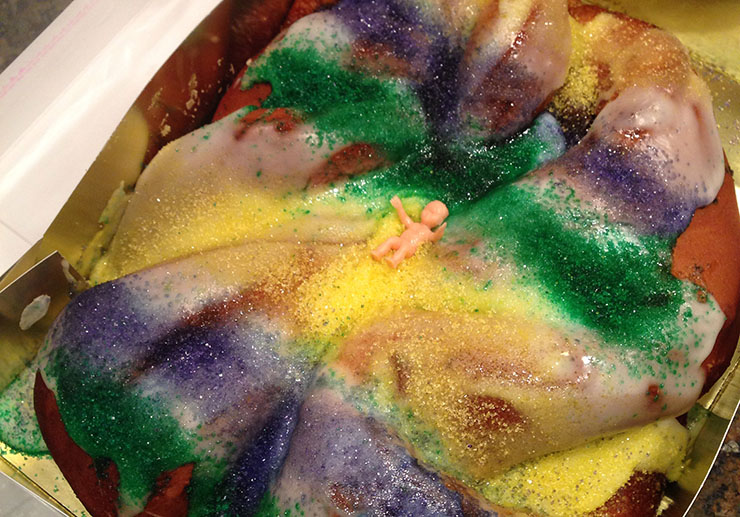
Bayou’s owner/chef, a native of New Orleans, brings his authentic Louisianan fare to Northern Virginia in his charming cafe. This year, they are hosting a huge block party from 6-9pm on Tuesday in conjunction with the 16th Clarendon Alliance Annual Mardi Gras Parade. It will feature food, Bourbon Street-style drinks and Abita Amber beer in complimentary Mardi Gras souvenir cups. As an added bonus, kids 12 and under eat free! You can get tickets here.
The Clarendon Courthouse Parade is the largest Mardi Gras parade in the mid-Atlantic region. The parade starts at 8pm and runs along Wilson Boulevard from North Barton Street to Washington Boulevard. It’s a family-friendly affair and will feature a mix of marching bands, parade floats, community groups and local businesses.
For an extensive list of Mardi Gras festivities in the DC area click here.
Related Articles:
February Events in the Reston Area

